What’s the one thing folks aren’t talking about when it comes to giant 100-plus-inch TVs? How do you find a television calibrator these days? Will we ever get a TV that can produce all the colors? And … is Sony really quitting OLED?
Home theater setup challenges
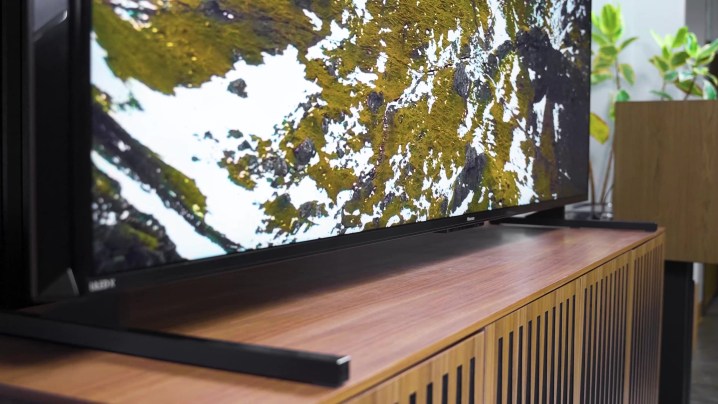
This first question isn’t a question so much as a comment, but it relates to a previous installment centered around projectors.
It comes from Daniel Kelleher, who said: The one thing that no one talks about is where the center audio channel would go if you have a 5.1 or larger system. With a 100-inch TV, you would pretty much have to put your center channel on the floor or ceiling. Even a soundbar would be extremely low to the ground as the TV pretty much takes up the whole wall. So, audio is very compromised. If it weren’t for that, my next video component would be a TV.
Daniel also shared images of his setup and noted he uses an acoustically transparent screen to get his center channel behind the screen when it is dropped down. It’s also already below his TV when not using the projector.
You’re right! So, let’s talk about it. I think Daniel brings up a great point here. One of the challenges with large screens, whether a TV screen or a projection screen, is that the bigger the screen gets, the lower or higher the center channel speaker will have to be placed — unless you use an acoustically transparent screen where the sound of the speaker can go right through the screen. just like in a commercial movie theater.
I’ve experienced this issue myself, actually. I think it is an especially big challenge with ultr short throw projectors. The projector often goes where a center channel might go. And even if you mount the center channel directly below the screen, there’s always the chance that if you don’t have it all set up just right, the center channel could block some of the light from the projector or, if the speaker has a gloss finish, it will end up reflecting some of the light coming from the screen.
There are a number of challenges with large-screen formats. But with at least some projector setups, an acoustically transparent screen allows a center channel to output sound closer to where the voices and actions appear on the screen. We call that anchoring the sound to the screen.
So what’s the solution in the case of a TV? You can’t put anything behind it. So you’ll indeed have to put a center channel above or below the TV. Fortunately, in my experience, the brain is pretty good at making accommodations. If you let your mind relax a bit, you can get to the point where the suspension of disbelief isn’t ruined by having the dialogue come from below or above where you see a person’s mouth. It’s extraordinary how your brain will make it work for you if you let it. If you can let go of your frustration that the speaker is just below or above the image, your brain will associate the sound with the image. But I also know folks who just can’t do it.
So, what then? I’m just imagining things here, but with an OLED, QDEL — or possibly even microLED — you can turn the screen into a high-quality speaker that’s directional enough to be effective. You may have a center channel that isn’t perfectly voice-matched to the rest of your speakers, but at least the sound is literally coming from the screen in that case. Some of Sony’s OLED TVs do this now.
But for any backlit TV, that isn’t possible. The TV’s speaker system would need to become a big priority. It would need to have a soundstrip at the bottom and audio processing that essentially “lifts” the sound using psychoacoustics to make it seem like the sound was coming from that screen. I think that can be done, but it’s going to take time, money, and intention. I guess now is the time to start asking TV manufacturers to make the TV audio a big priority for home theater enthusiasts. And frankly. that doesn’t seem like a big ask to me since these are super-premium TVs and already cost a small fortune. You might as well go for broke while you’re going broke and get a decent audio system out of the TV.
Outside of that, it’s going to be a compromise. which, in the end, isn’t a ridiculous ask. Home theater systems are riddled with demands for compromise, aren’t they?
In-home TV calibration
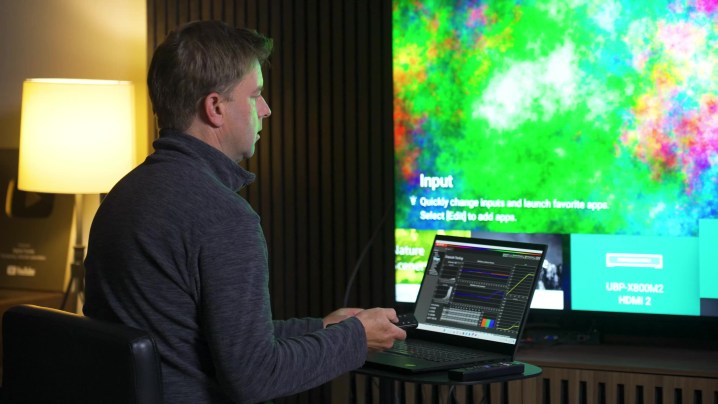
The next question comes from Nathan McGraw, who writes: I recently built my dream (to me) home theater, and I’d like to know if I’m getting the best visual and audio experience. How can I go about finding a calibrator in my area? Furthermore, in your opinion, do you believe having a professional calibrator come out is money well spent, or can you get away with the built-in auto setups?
Nathan, I am so glad you put this question in front of me this week because I’ve needed to offer some help around this for a long time. I get asked all the time: How do I find a calibrator in my area or one who is coming through my area or willing to come to me?
First, please know that I understand — and I want everyone else to understand this, too — that Google is not very helpful on this. You can be an ultra-pro certified Googler and come up with bupkis when searching for a calibrator.
The next thing I want to do is call attention to the fact that display calibration — whether for a TV or projector — and audio calibration are two different things, and it is not uncommon to find a calibrator that does displays, but not audio or vice versa. Obviously, it would be great to find one person who is a legit expert at both. But even finding legit experts can be tricky!
The next important thing to know is that audio calibration is less … let’s say, “resource intensive” than video calibration. Audio calibration is easier and less expensive to DIY than video calibration, simply because the tools to do audio calibration are less expensive. The art of audio calibration is still a specialized skill, and I’m not here to say audio calibration is easier than video calibration. But I will say that, from a cost perspective, it’s less expensive to get the tools you need to perform audio calibration, and from there, it’s all about how much willingness you have to educate yourself online and get the job done.
Video calibration — done well — requires very expensive tools. You can get by with patterns on a disc or download some files to a USB instead of buying a pattern generator. Ultimately, you’ll need the software (I use Calman by Portrait Displays exclusively) and at least a colorimeter, and even those run into the thousands of dollars at the low end.
With all of that understood, you can see why it will be easier and less expensive to have a pro come out and take care of it for you. But how do you find that pro?
One way is through an AVS forum thread with a running database on custom installers, listed in order by the state in which they operate.
Another option is to go through the Imaging Science Foundation (ISF) database of calibrators. You don’t have to have ISF certification to be a good calibrator, and you also aren’t necessarily a good calibrator just because you have ISF certification. Still, it’s a good starting point to at least find names and businesses so you can do some research into reviews of their work. And that’s the key here. Look up reviews of the folks you’re considering using. You don’t want a hack plumber working on your pipes, and you don’t want a hack calibrator doing a meh job on your system.
Another approach is to go to the CEDIA website and look for contractors there. CEDIA stands for Custom Electronic Design and Installation Association, and it puts on an annual trade show that I sometimes attend. It’s one of my favorite shows. It runs ongoing education seminars, certification training, etc. You can probably find some CEDIA-certified experts in your area through the CEDIA website.
You could also try calling local home-theater shops in your area. Even if they aren’t in your city, a home theater specialist shop in your state may have calibrators they work with or others that they can recommend.
Before I move on to the next question, I’ll add that I am hopeful that we can cultivate a new crop of calibrators. Home entertainment enthusiasm is on the rise, and we will need new blood in this profession. It’s a very niche career opportunity, but a good one and a fun one if you ask me.
Running the color gamut
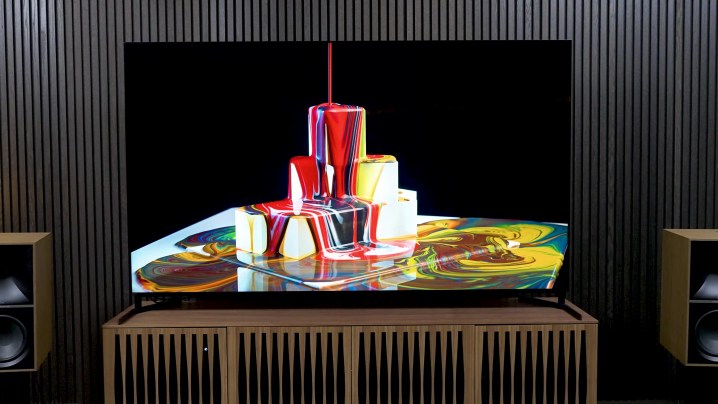
Jamie Dewbury writes: A common stat for TVs is the percentage of color gamut, so I ask the following: 1.) How long, if ever, will it take to see a TV that reaches 100%? 2.) Why is there a vast section of green tones always outside the triangular measurement area?
So, first things first, what is color gamut? Color gamut is a term we’ve come up with to describe the range of colors that a device can display or record, relative to the total range of colors that is within the visible spectrum.
Usually, we see this visually expressed on a chart like this.
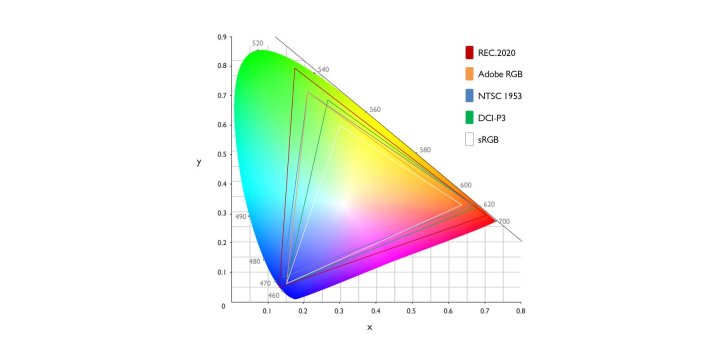
The sort of triangular color blob represents the visible color spectrum, and the triangle within it represents the color gamut.
There are a bunch of different color gamuts, and they’ve been given names. On the low end, we have the NTSC color gamut, which was developed in 1953 as a standard for broadcast television. Then we move up to sRGB, also known as Rec. 709, which is the standard we have for SDR TV these days. There’s also Adobe RGB, DCI P3, and finally, Rec. 2020 (the one with the most colors in it).
Who developed and defined these color gamuts is another topic for another day. For now, I think it’s most important to note that in TV circles, we tend to talk about Rec. 709 for SDR, and then DCI P3 for cinema or HDR. Finally, Rec. 2020 is sort of this holy grail color gamut for the last several years.
Right now, the Rec. 2020 color gamut is still the big, audacious, aspirational goal. The best consumer displays right now — like the Sony A95L — manage to get to the low 90% area for coverage. That’s kind of a big deal because for a long time, we were stuck down in the mid 70s. There have been prototype displays that got to 95%, though.
I would like to think we are maybe five years or so from consumer displays pushing the Rec. 2020 envelope. That’s just a guess, though. I’d love to be surprised and see it sooner than that.
As for your question about green. Why is there so much more green outside the triangle than the other colors?
I will be totally transparent and tell you this kind of color science thing is a bit over my head. What I do know is that the human eye is more sensitive to certain wavelengths of light than others. I also know that TVs use red, green, and blue color primaries — RGB! — and that each of those colors is represented by a very specific number on an X and Y axis. For the red, green, and blue to combine and make the most colors possible, a specific value for green must be assigned. And I imagine that particular value leaves some of the green spectrum behind.
That is as far as I’m going to take that, but I appreciate the question because you’ve made me curious, and I’m going to take every opportunity I can to learn more!
Is Sony abandoning OLED?
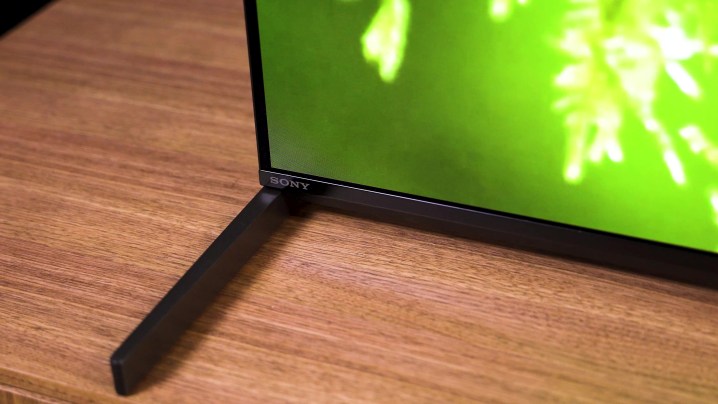
Finally, a question I had a feeling would be a thing, despite my frustration that it never should have been in the first place.
The question comes from Alejandro Rodriguez, who asks: So is Sony really abandoning OLED? They had the best on the market.
Sony is not abandoning OLED. Please calm down. I’m not here to play a blame game, but here’s why the question that never should have been a question has come up: A YouTuber I respect very much, Vincent Teoh, published a video titled “Sony Plan to ditch OLED & use mini-LED for 2024 flagship TV. Here’s why.”
I would argue that the problem shouldn’t be attributed to that headline. The problem is that some folks didn’t watch the whole video and understand what Vincent was saying. Instead, they took to forums and started spreading misinformation by parroting that headline out of context.
And, well, it stirred up a bit of traffic. So others started hopping on the bandwagon to try to get in on that traffic or rack up those views.
I encourage you to watch that video. But here’s my take:
Vincent and I were on the same press trip as guests of Sony in Tokyo. Part of what we learned there is that Sony is leaning hard into its mini-LED backlight technology and is targeting a mini-LED backlit LCD to be marketed as its flagship.
Now, I don’t have time for a debate on what the term “flagship” should mean. But what I will say is that what you consider flagship to mean and what the marketing gurus at corporations like to use the term flagship for are often going to be very different things.
I mean, Samsung never called its QD-OLED TVs its “flagship.” But I think many TV enthusiasts would say, “Uh, no, sorry, Samsung, your marketing team is wrong — the S95C is your flagship TV.”
Sony isn’t quitting OLED. I think it made the A95L OLED so good, and the QD-OLED technology is at a place where incremental generational improvements are so minor, that trying to cram another OLED TV into the pipeline in 2024 — an A95M, or N, or whatever — just doesn’t make sense. Also, keep in mind that the A95L came out late in 2023, and some would argue it looked and performed like a TV we would expect to see in 2024.
No, Sony has an opportunity to reestablish some dominance in the mini-LED TV space by coming out with a mini-LED TV that is so good that it just trounces the competition. That expands its sales, and that’s good for the company.
The A95L is practically selling itself. It doesn’t need help. It swept most awards and shootouts across the globe.
The X90L, X93L and X95L? They didn’t get nearly as much attention in 2023. I suspect that we will be talking a lot about the new versions of those TVs in 2024.
So, again, Sony isn’t ditching OLED. It is perhaps just not making it a massive priority for 2024. Even Sony isn’t crazy enough to take the best TV of 2023, pull it off the market, and say, “We just did that to prove we could,” then drop the mic and walk out of the room.
Editors’ Recommendations

